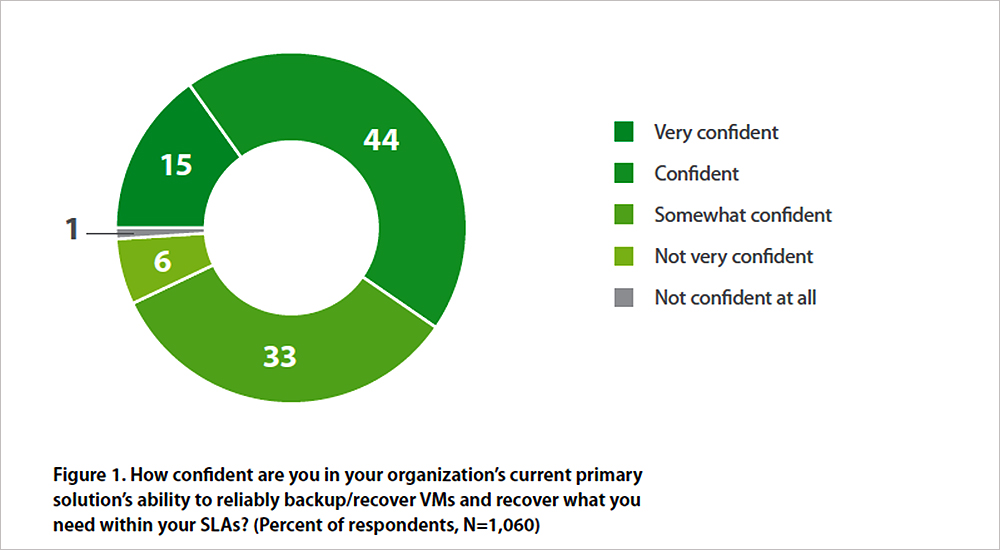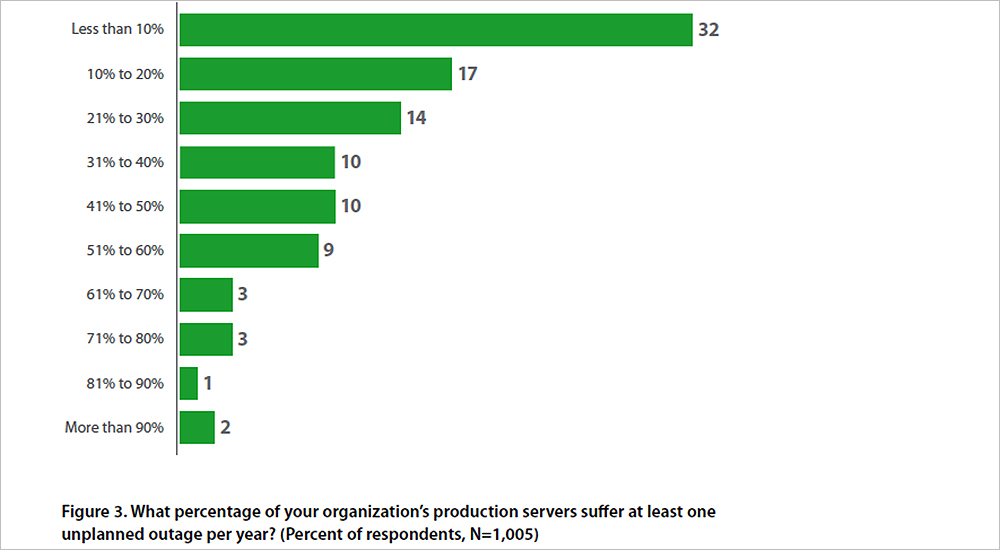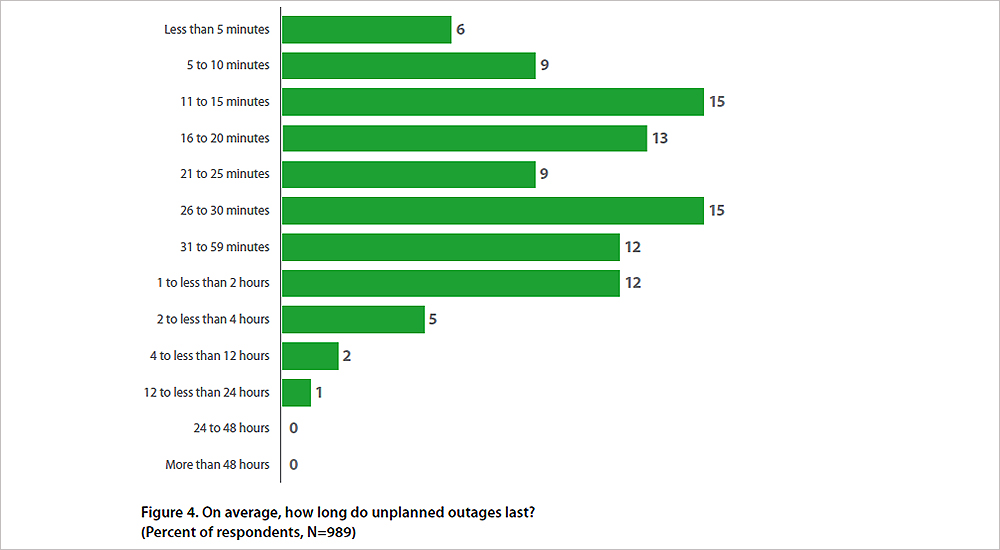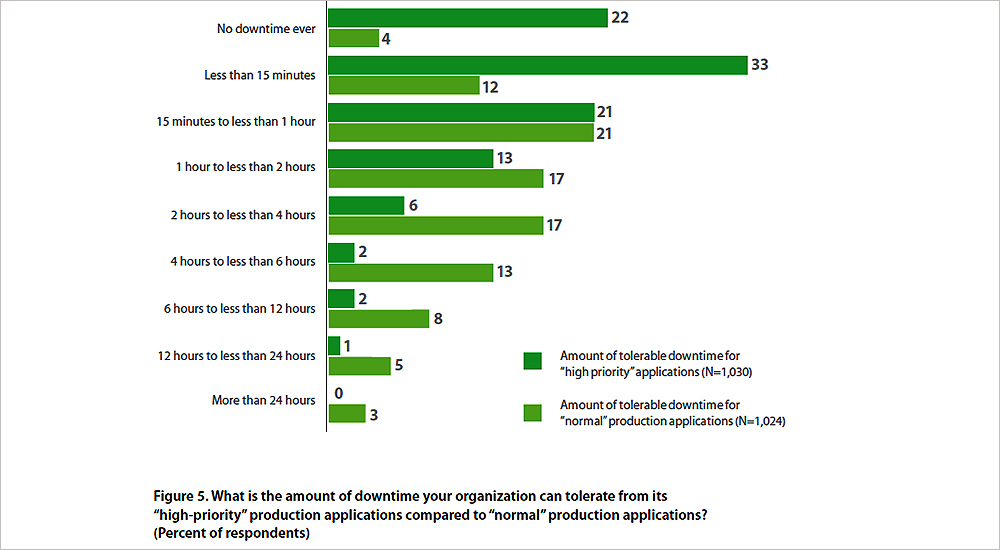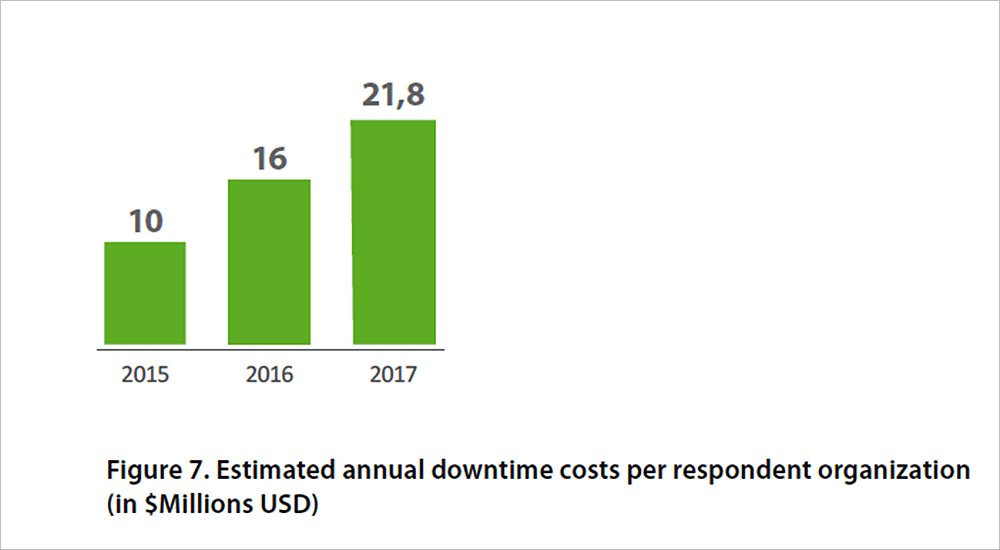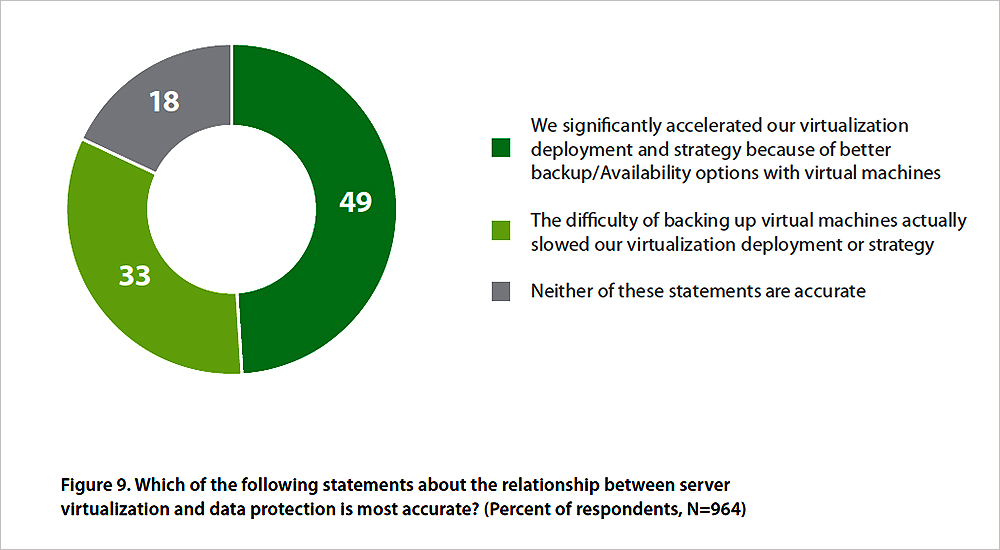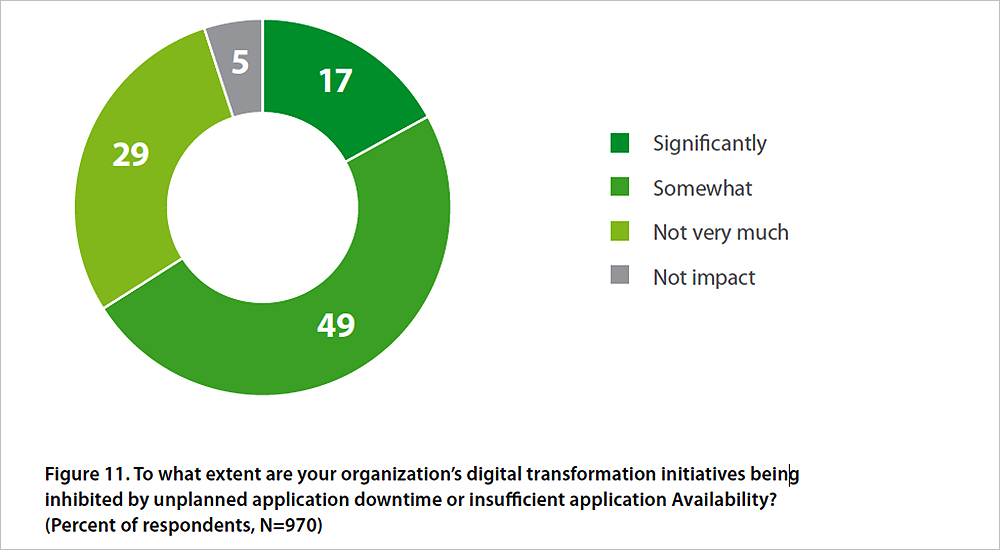To better understand Availability challenges, Veeam commissioned the Enterprise Strategy Group to survey more than 1,000 business professionals and senior decision makers for the sixth annual Veeam Availability. This includes respondents from UAE and Saudi Arabia. The research study reveals that organisations across the globe continue to struggle with Availability assurance within their IT environments.
The unfortunate reality is that too many business-accelerating and digital transformation initiatives are being hindered by inadequacies in IT system Availability. Because teams are burdened with keeping existing systems running, they are not able to move systems and architecture forward to help their organisations evolve.
The first and most crucial step in ensuring viability of IT systems providing service to business units and customers is to accept that there is an Availability Gap. Too many organisations lack accurate metrics or monitoring processes and presume their systems are sufficient. Instead, presume there is a problem and then quantify it.
Next, quantify the business unit’s service level agreements and assess the protection mechanisms and recovery capabilities. Only by comparing your Availability and protection expectations with real-world capabilities will you be able to determine the size of the gaps in the strategy.
Convert gaps into impact analyses by simply asking, if a system were to fail, what would that cost? By looking at past systems logs, most will discover that systems have had interruptions in the past, which can now be quantified as business impact.
With an accurate understanding of the frequency and duration of outages within the environment, compared with the service level agreement expectations of your constituents, and an assessment of the economic and perception impacts specifically to an organisation, it is possible to reimagine what it would take to become an Always-On Enterprise.
Moving forward, reducing downtime and data loss will require decision makers to acknowledge that downtime and data loss have costs, so doing nothing will cost more than any solution. Meanwhile, technical decision makers will need to reimagine that Availability and protection really are attainable.
This is possible, if you first stop using legacy approaches and embrace an IT strategy that is underpinned by agile virtualisation, complemented with cloud-services, with reliable protection and rapid recovery as elements of the design. Only with those elements accomplished can the organisation transform its digital strategy to accomplish its greater goals.
Some of the top-line findings appear below.
Only 15% confident in current solution’s ability to back-up and recover virtual machines
Too many organisations continue to struggle with data recovery in their efforts to ensure the Availability of their virtualised systems. Only 15% of surveyed decision makers are very confident in their current solution’s ability to reliably back up and recover virtual machines within their service level agreements. That is an appallingly low percentage of real confidence. Any organisation that is not very confident in its ability to protect the foundational structure of its modern datacentre should be reexamining its strategy and the technologies that it depends on. Consider the fact that respondents surveyed say they are meeting their recovery time objectives and recovery point objectives only 72% of the time. In more than one out of four attempts, their recovery effort either fails, takes too long, or recovers an inadequate amount of data.
More than one in four servers suffer at least one unplanned outage each year
Across many enterprises, respondents acknowledge that their IT teams cannot recover fast enough and reliably enough. Veeam refers to these challenges as the Availability Gap and the Protection Gap. The Availability Gap refers to the difference between the service levels expected by business units, and an organisation’s ability to deliver the application and information that users demand. Protection Gap refers to an organisation’s tolerance for lost data being exceeded by IT’s inability to protect that data frequently enough.
More than four out of five organisations surveyed recognise they have an Availability Gap, and nearly three out of four organisations recognise they have a Protection Gap. Decision makers are acknowledging, for the third year in a row, that they continue to suffer an Availability Gap and Protection Gap. On average, more than one in four 27% servers suffer at least one unplanned outage each year. The median length of an outage is 23 minutes. It is important for an organisation to recognise the precariousness of its IT systems and avoid trivialising downtime when it happens.
Big gap between acceptable downtime and actual downtime
The disparity between the speed at which IT can recover workloads and the Availability expectations of business units and other end-users is a concern. The average acceptable data loss among high-priority applications is 72 minutes. But, the surveyed organisations only protect their high-priority data approximately every 127 minutes, on average. Similarly, while the average acceptable data loss among normal applications is 240 minutes, surveyed organisations only protect their normal data approximately every 352 minutes. This is a quantifiable example of a Protection Gap. To be clear, most organisations believe that they have an Availability Gap, a Protection Gap, or both. To overcome these gaps, they must start with increasing the frequency of protection and boosting the agility and reliability of recovery.
Average cost of annual downtime was $21.8 million per organisation
The basis for calculating downtime costs was: average total number of production servers 1,200 deployed, percentage of servers experiencing at least one outage per year 27%, average length of unplanned outages 85 minutes, average hourly costs for business-critical applications was $108,000 and nonbusiness-critical applications $48,000, industry average application to server ratio 0.81. Using these inputs, ESG calculates that organisations participating in this research suffer direct financial costs of $21.8M annually, on average. This continues the trend toward rising costs from downtime as seen in 2016 $16 million, and 2015 $10 million.
33% recognise inadequacies in virtual machine backup have slowed virtualisation deployment
It is important to recognise that inadequate protection and recovery mechanisms do not just hinder systems and business processes. They also hinder an organisation’s ability to modernise its IT environment as part of evolving for the sake of business. Virtualised servers are the foundation upon which most modern IT infrastructures are built. Most surveyed respondents 82% acknowledge some relationship between the viability of their backup solution and the relative success of their virtualisation deployment strategy. A non-trivial amount 33% recognise that inadequacies in their virtual machine backup solution have slowed their organisation’s virtualisation deployment efforts. On a brighter note, many 49% recognise that an effective virtual machine backup solution has enabled them to significantly accelerate their virtualisation deployment strategy.
66% of digital transformation projects inhibited because of unplanned downtime or insufficient application Availability
Although some organisations are still modernising their foundational infrastructures for virtualisation, many others recognise that a digital transformation strategy will take them much further than simple infrastructure modernisation. More than two-thirds of the surveyed respondents 69% recognise that digital transformation is critical or very important to their organisations moving forward. About half of them 45% say they are still in the planning or just beginning phases of digital transformation initiatives. It is alarming that more than half of respondents whose organisations have digital transformation initiatives on their roadmap, 66% report that those initiatives are being inhibited because of unplanned downtime or insufficient application Availability.
Key takeaways
- Any organisation that cannot recover granular data or whole VMs faster than the established service level agreements related to acceptable downtime has an Availability Gap.
- Any organisation that does not protect its data at a frequency greater than the mean of its service level agreements related to data loss has a Protection Gap.
- Gaps in either Availability or protection hinder virtualisation strategies, modernising data centers, and digital transformation initiatives
- Many organisations align neither their protection frequency nor their recovery mechanisms with the established service level agreements of their business units, resulting in inadequate Availability
- Many organisations are not able to effectively quantify the myriad costs and impacts of downtime or data loss, hindering ability to garner operational support for better mechanisms and results
- Most IT infrastructures are in a perpetual state of modernisation, which includes digital transformation, virtualisation, hybrid cloud services, diversification of production, tightening service level agreement, all without increases in budget
- Organisations must address the Availability and Protection Gaps that they have, or they put their employees and their institutions at risk
- Organisations should recognise they have gaps in their Availability and protection capabilities, resulting in a failure to meet the expectations of their business units
Excerpted from 2017 Veeam Availability Report by Enterprise Strategy Group, titled Why Organisations Still Struggle To Digitally Transform and Innovate.
Click below to share this article


